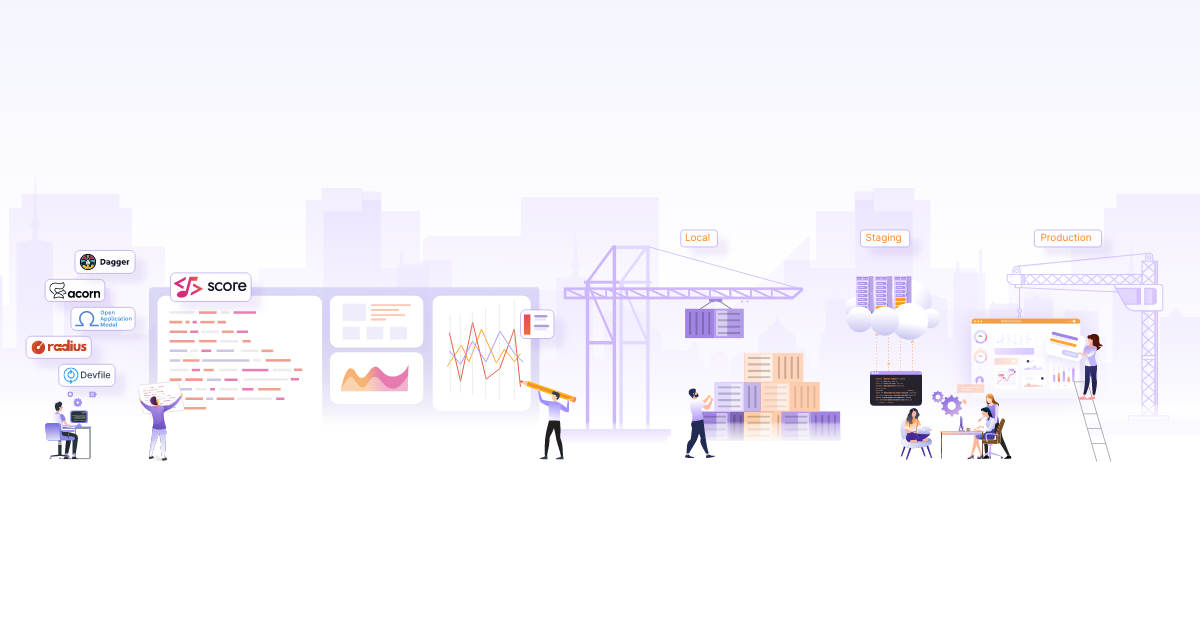
Platform Engineering is Not Just About the Tools

This blog post was originally published on The New Stack by Atulpriya Sharma, Sr. Dev Advocate at InfraCloud.
It’s no secret that platform engineering has become the talk of the town, and every organization is racing to get their strategy right regarding platform engineering. The value of the platform as a natural progression of the DevOps movement and delivering better developer experience while reducing cognitive load is evident, especially from the early adopters such as Spotify.
While many organizations are fixated on tools, tech stacks, integrations, APIs, and all the nuts and bolts of technology, there is a risk of missing out on the bigger picture — people and processes. Platform engineering isn’t solely about the tools and components. It’s also about alignment within the organization and a special focus on understanding user needs — in this case, your software engineering teams.
So, while everyone is rushing to assemble their tech arsenal, it’s vital to ask an essential question: Is platform engineering just about tooling? What about stakeholder involvement, user-centric design, team dynamics and a culture of continuous improvement?
In this blog post, we will look into the non-tooling aspects of platform engineering and understand everything required to build a successful platform — beyond the tooling.
6 Platform Engineering tenets beyond tooling
With the rapidly evolving platform engineering landscape, we often forget that the true success of a platform depends not only on the shiny tech but also on the nontechnical elements that make it successful.
We’ve identified six principles beyond the tooling aspect of platform engineering that form a critical part of platform engineering.
Stakeholder involvement and alignment
Imagine you are building a platform for a handful of teams. Some teams are using legacy .Net, and a few are building the backend in Go and the frontend in Vue. And then there is the data science team whose workflow is totally different. Building a platform for such teams requires strategic decision-making.
As a platform team, it’s crucial to balance the vision of company leaders and the user requirements with the business goals. In product teams, this is a well-understood job, and product managers act as that alignment glue between multiple teams. But how do we involve and align stakeholders while building a platform?
Form a steering committee with key stakeholders, including senior leaders, users from all departments and decision-makers overseeing the platform’s development. They will also set the expectations and their alignment with the organizational goals. Interestingly, according to the 2023 State of Platform Engineering survey, one of the major concerns for 44% of respondents was setting realistic expectations (original paper).
It is very critical to have a way to align various teams and move forward for a platform engineering initiative to succeed in an organization. In some organizations of nontrivial sizes — this could be a big part of the platform product team’s job.
Understanding user needs
Understanding user needs and expectations is at the heart of successful platform engineering. It’s not just about building a platform; it’s about crafting an experience that resonates with your users. By creating vivid user personas and user stories, you gain insight into the diverse needs and expectations of your audience.
For instance, consider Bob who’s a product engineer who relies on the platform for deploying applications to different environments. Create a persona that mirrors Bob’s challenges, which will give you a holistic view of his pain points. This insight helps you to shape the platform to align perfectly with Bob’s needs and similar users like him.
By keeping the user at the center while building platforms, you can deliver a platform that not only meets the requirements of the users but also exceeds them.
Team skilling and diversity
Building a product involves a wide range of activities, including defining essential features that align with user needs, designing user-friendly interfaces and overseeing the complete development process. Each of these activities requires skilled professionals.
We all agree that user experience is incredibly important; whether through dashboards, command-line tools or APIs, it strongly influences whether developers use the platform. Hence, having a user-experience expert on the team is critical for the success of your platform.
Further, understanding what your developers truly need is vital as that defines your platform and ensures that it caters to their needs. To help with this, you might also want to have skilled product managers on the team who are good at requirement gathering and eventually shaping the product.
Hence, building a successful platform is about having a team with a mix of skills and expertise. This ensures the platform works well, is user-friendly and meets the specific requirements of its users.
Internal evangelism
Building a platform is undoubtedly a big step, but it’s equally vital to ensure its organic and widespread adoption within your organization. And that’s where having a well-planned evangelism plan comes in handy. According to the 2023 State of Platform Engineering report, the top priority for 47% of respondents was increasing the awareness of their platform (original paper).
At the helm of any evangelism plan are ambassadors and champions. These individuals passionately advocate for the platform, helping users understand the importance of the platform and encouraging their adoption. These could be through internal road shows, webinars, coffee chats, or even blog posts and in-person meetups.
While ambassadors and champions spread awareness about the platform, it’s critical to reward them for sustained enthusiasm. It could be a shoutout in an internal newsletter, companywide meetings, or monetary perks and promotions, depending on their efforts.
By having an internal evangelism plan in place, organizations can achieve broad adoption and maximize the impact of their platforms.
Metrics-driven decision making
Metrics — qualitative and quantitative — are the compasses guiding your platform engineering efforts. Defining and understanding these metrics are critical in gauging the success of the platform. These metrics serve as a critical glue between the deployment of a platform and optimizing its user experience and alignment with the larger organizational goals.
Consider an internal developer platform (IDP) tailored for site reliability engineers (SRE). You can track metrics like Net Promoter Score (NPS) to understand the sentiment of the SREs and active users to understand user engagement. You can use SPACE metrics that offer a multifaceted perspective, encompassing user contentment and technical performance. You can also refer to DORA metrics that reveal vital insights into the efficiency and reliability of the platform’s infrastructure.
These metrics collectively empower organizations to optimize resource allocation, perpetually enhance the user experience and drive continuous improvement, ensuring the platform aligns with its intended objectives.
Feedback loop and user engagement
You have seen that building a platform is a multilayered process involving tech stacks and people. Creating a structured feedback loop with the right channels is indispensable to ensure that your platform aligns seamlessly with your user expectations.
You can create multiple feedback channels like forms or questionnaires to gather insights and use them for quick updates and fixes. Prioritize what users need, understand their ideas and implement them. Keep users updated about changes for ongoing improvements. This keeps your platform adaptable and in line with user needs.
Through this feedback loop, the organization not only ensures that the developer platform remains closely aligned with the unique needs of its users but also cultivates a culture of continuous improvement and collaboration.
What next?
Building a platform must be a holistic approach, embracing technical and non-tooling aspects. Organizations can elevate their platform development efforts by giving equal importance to the tenets discussed in this post.
Align platforms with your organizational goals, invest in understanding and engaging with your end users, nurture diverse skill sets within teams, foster internal champions, leverage data for insights, and establish robust feedback mechanisms. All of these collectively will help your platform excel in this dynamic environment. Reach out to our platform engineering experts, and let’s explore how we can create a platform that truly serves your goals.
Do share your thoughts on this article and platform engineering in general with me. Connect with me on LinkedIn or Twitter.
Exploring Platform Engineering? Read the other blog posts from our Platform Engineering series and browse webinars on our YouTube channel.
Building a Platform? Download our free 22 page Platform Engineering OSS Reference Architecture eBook which includes blueprints, frameworks, tool suggestions, maturity questionnaires and much more!
Stay updated with latest in AI and Cloud Native tech
We hate 😖 spam as much as you do! You're in a safe company.
Only delivering solid AI & cloud native content.











